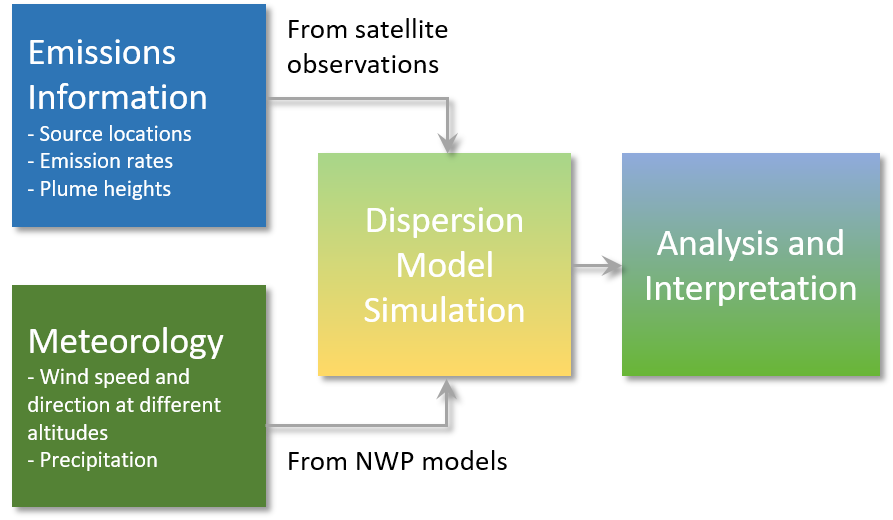Atmospheric Dispersion
CCRS is developing an atmospheric dispersion modelling capability to enhance early warning of airborne hazards in the Southeast Asia region. These include smoke from land and vegetation fires that can adversely impact human health, and ash from volcanic eruptions which pose a major aviation hazard. Dispersion model simulations predict the movement and spread of pollutants in the atmosphere and help inform assessments on the risk to public safety and health.
Through collaboration with the UK Met Office, the dispersion model NAME (Numerical Atmospheric-dispersion Modelling Environment; Jones et al., 2007) is used to simulate the physical dispersion of pollutants, as well as chemical transformation and deposition processes occurring in the atmosphere. The dispersion simulations require forecasts of atmospheric conditions derived from Numerical Weather Prediction (NWP) models such as SINGV.
Haze dispersion modelling system
CCRS aims to establish a reliable forecast system that can adequately simulate smoke transport from fires in the region (Hertwig et al., 2015). There are two primary inputs to the model: smoke emissions are derived based on satellite-based active fire detection products available in near real-time and forecast meteorological fields are obtained from NWP models. The dispersion domain has been defined to include key source regions and smoke pathways in Southeast Asia. Model outputs are bias-corrected and verified against ground-based measurement stations. The model forecasts are used to guide assessments of the regional haze situation by operational meteorologists. The model outputs also contribute to the WMO VFSP-WAS (Vegetation Fire and Smoke Pollution Warning Advisory and Assessment System; Baklanov et al., 2021) multi-model ensemble for Southeast Asia.

Fig: Schematic of the haze dispersion modelling system
Towards a predictive air quality modelling capability for Singapore
Over the next few years, CCRS is developing the capability to deliver routine model forecasts of local air quality in Singapore. In addition to particulate matter from land and vegetation fires, anthropogenic sources in the region such as road traffic, industries, shipping as well as emissions from biogenic sources will be considered. The modelling system will simulate the chemical transformations leading to secondary pollutants that further impact air quality. Modelling of these complex chemical reactions in our tropical region is not sufficiently understood and is a focus area of research in CCRS.

Fig: An air quality modelling system simulates the key processes involved as pollutants move
through the atmosphere. (Image credit: European Environment Agency)
References
Hertwig, D., Burgin, L., Gan, C., Hort, M., Jones, A., Shaw, F., Witham, C., Zhang, K., 2015. Development and demonstration of a Lagrangian dispersion modeling system for real-time prediction of smoke haze pollution from biomass burning in Southeast Asia. J. Geophys. Res.-Atmos. 120 (24), 12605–12630.
Jones, A., D. Thomson, M. Hort, and B. Devenish, 2007. The U.K. Met Office’s next-generation atmospheric dispersion model, NAME III, in Air Pollution Modeling and Its Application XVII, edited by C. Borrego and A.-L. Norman, pp. 580–589, Springer, New York.
Baklanov, A., Chew, B. N., Frassoni, A., Gan, C., Goldammer, J., Keywood, M., Mangeon, S., Manseau, P. M., Pavlovic, R., 2021). The WMO Vegetation Fire and Smoke Pollution Warning Advisory and Assessment System (VFSP-WAS): Concept, Current Capabilities, Research and Development Challenges and the Way Ahead. Biodiversidade Brasileira – BioBrasil (2), 179-201.
